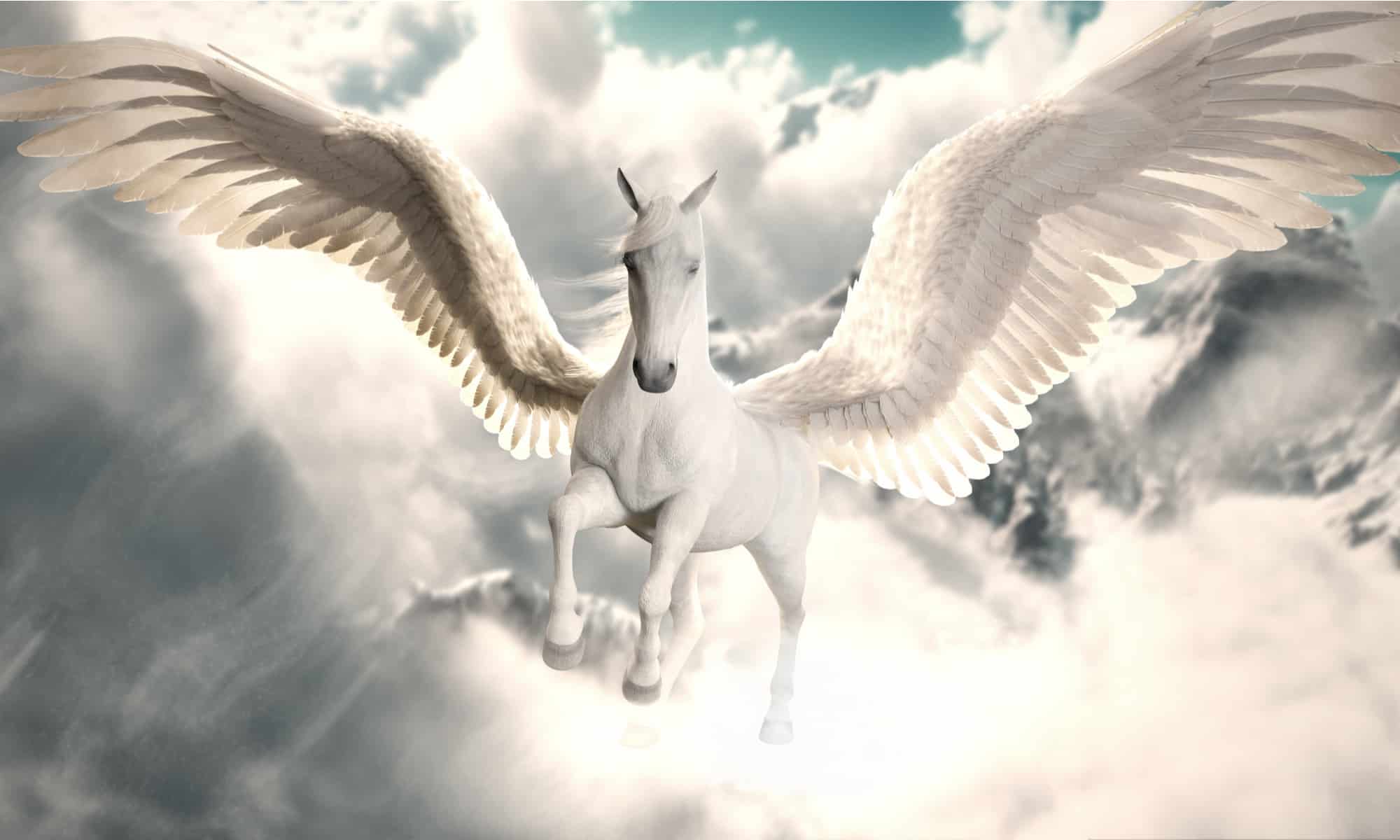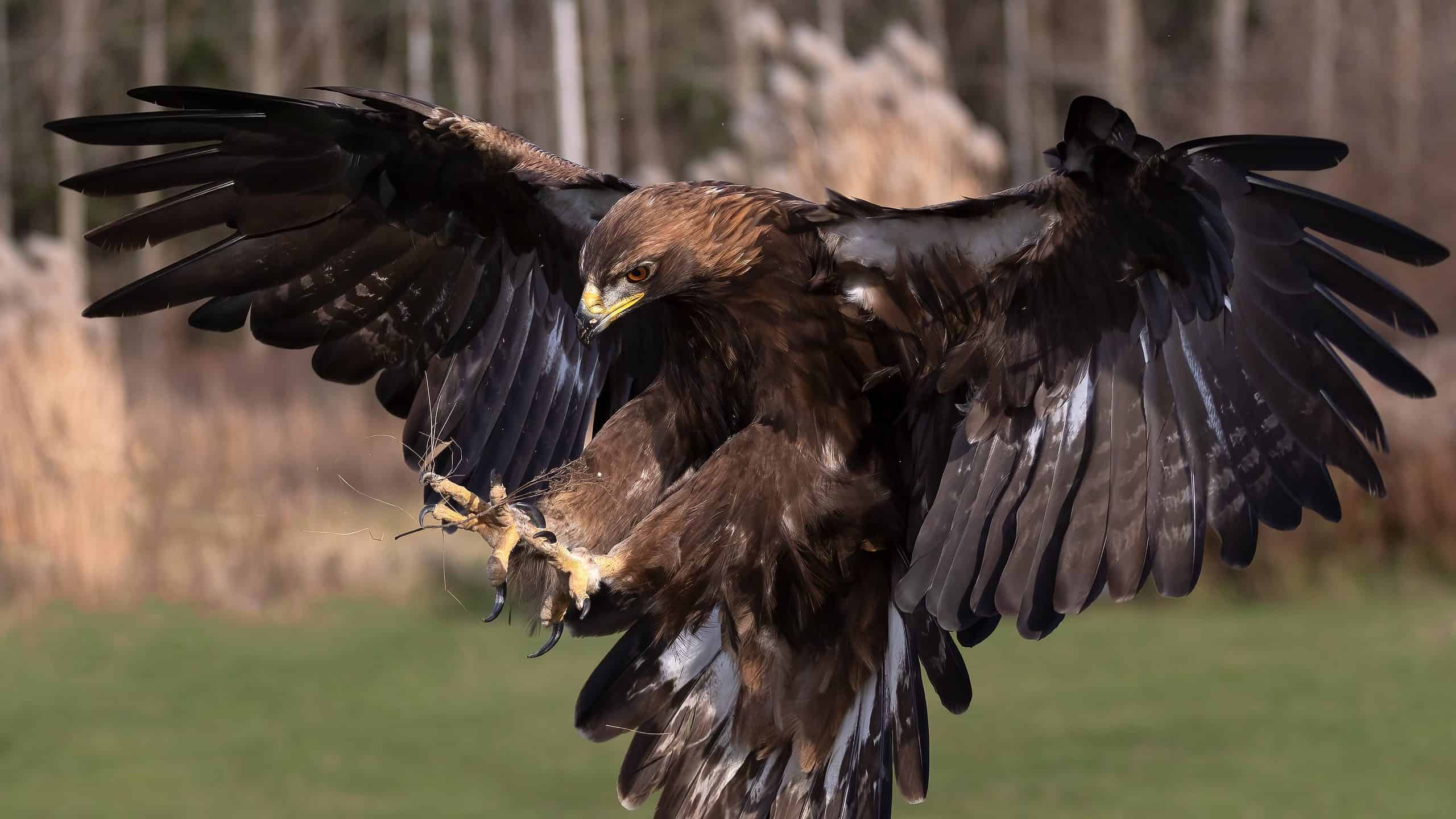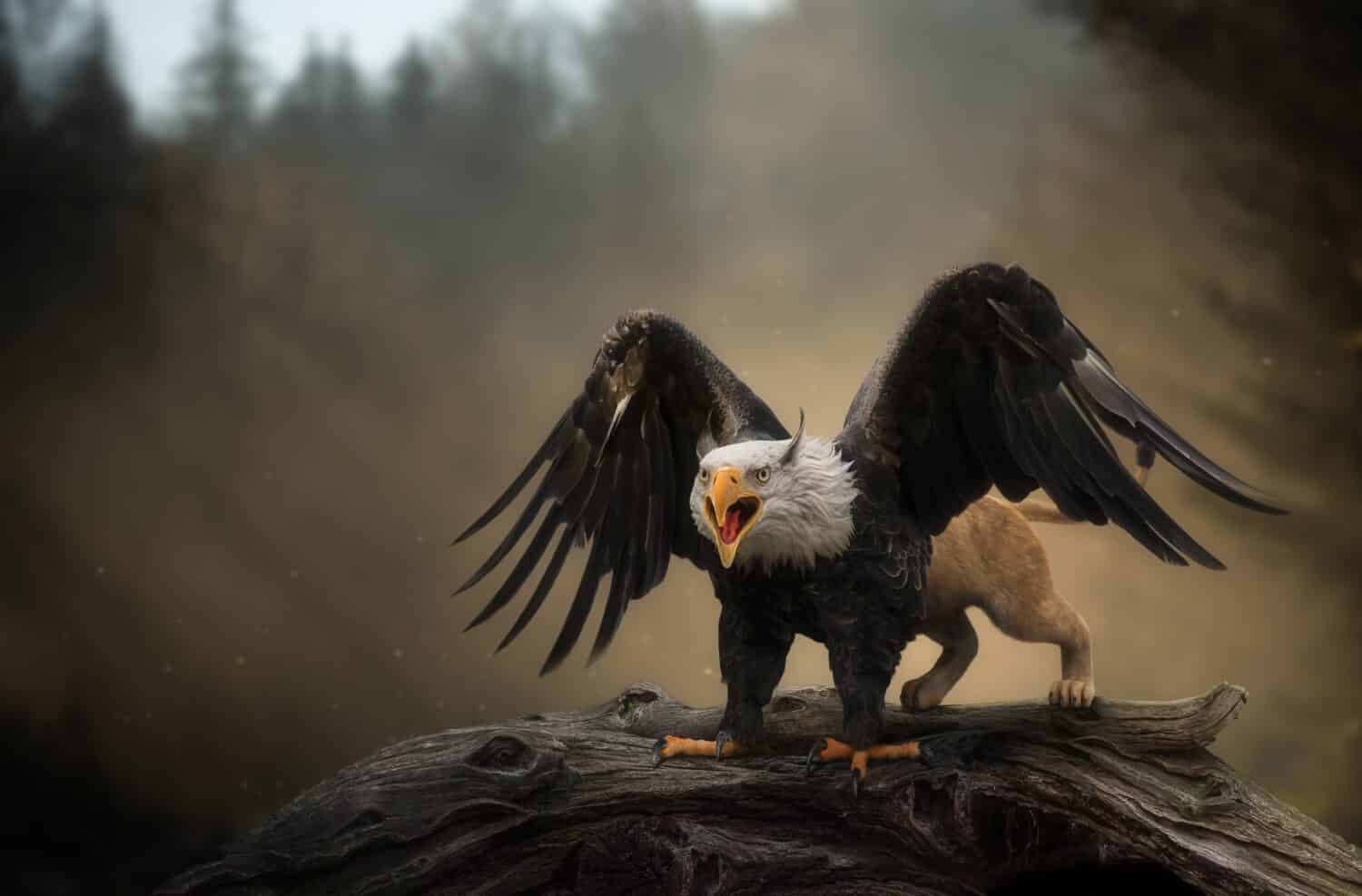Overview of Greek Mythology
Greek mythology refers to a collection of stories about certain gods, religious traditions, natural occurrences, and heroes of antiquity. It centers around the culture of Ancient Greece, though the Romans also adopted similar Pagan gods of the region. Greek myths helped ancient people understand the world around them as well as set up certain religious and cultural lifestyles for themselves.
Many Greeks believed that these myths about the gods and heroes were true while others saw them as fictional accounts that simply influenced their society and culture. Overall, the influence of Greek mythology prevails in modernity, as these stories and names have significantly shaped Western society in the social, political, and economic spheres.
Pegasus

The Greek hero Bellerophon rode the Pegasus to his battle with the Chimera.
©Toshauna/Shutterstock.com
The Pegasus was a winged horse from Greek mythology that was born from the blood of Medusa, a mythological female monster whose hair was made of snakes. When the Greek hero Perseus beheaded Medusa, the Pegasus formed from her blood. Another Greek hero named Bellerophon would ride the Pegasus to his famous battle against the Chimera. The Chimera was a mythological creature that appeared as a combination of a lion, goat, and dragon. Eventually, the Pegasus was adopted as a servant of Zeus and served as a constellation in the night sky.
Chimera

The Chimera appeared as a combination of a lion, goat, and dragon.
©pegasophoto/Shutterstock.com
The Chimera was a mythological monster that appeared as a combination of a lion, goat, and dragon. The lion portion was situated in the front, the goat in the middle, and the dragon at the behind. Additionally, the Chimera breathed fire, making it particularly dangerous. After the Chimera was defeated and killed by the hero Bellerophon, it became a symbol as well as a mythological figure. Today, the term “chimera” refers to something that is wished for but cannot be achieved. Another interpretation of the term “chimera” may also describe something fantastical or impossible to perceive.
Eagles

Zeus’s companion was a huge golden eagle.
©Touched by light images/Shutterstock.com
Eagles appear in Greek mythology and are often associated with heroes and deities. For instance, the Eagle of Zeus, sometimes called Aetos Dios, was a huge golden eagle that was a messenger of Zeus. Additionally, the eagle was the god’s companion and is sometimes depicted alongside Zeus in artwork. For example, the Statue of Zeus once included Aetos Dios seated at the left hand of Zeus.
Additionally, the eagle appears in the stories of Ganymede and Prometheus. Ganymede was a Trojan prince chosen by Zeus to act as a cupbearer to the gods. When Zeus chose Ganymede, the prince transformed into a magnificent eagle on his ascent to the heavens. Like other mythological figures, Ganymede became a constellation called Aquarius, which is associated with the zodiac sign Aquarius.
Prometheus, on the other hand, had an unfortunate encounter with an eagle. When Prometheus stole fire from the gods, he was chained to a summit within the Caucasus Mountains. As punishment, Zeus sent an eagle, often referred to as the Caucasian Eagle, to feed on the liver of Prometheus. Since Prometheus was immortal, his liver regenerated, meaning the eagle would feed on his internal organs for eternity.
Horses

Poseidon’s immortal horse was named Arion.
©PIC by Femke/Shutterstock.com
Horses appear in Greek mythology both supernaturally and naturally. For instance, the Pegasus is considered a mythical horse due to its ability to fly. On the other hand, the horses of the Greek hero Achilles, called Xanthus and Balius, were not considered innately supernatural although they were immortal. Other examples of horses in Greek mythology include the horses of Diomedes, the horses of Helios, and Arion.
The horses of Diomedes, also called the Mares of Diomedes, are encountered in the story of Hercules. Hercules was a Greek hero who was sent by King Eurystheus to accomplish 12 tasks, often called the Twelve Labors of Hercules. The eighth labor required Hercules to steal the Mares of Diomedes, which were four man-eating horses kept by the Diomedes, the king of Thrace. Hercules succeeded in capturing the horses, and he fed them the flesh of Diomedes.
The horses of Helios were named Aethon, Lampos, Phaethon, and Phlegon. These horses pulled the chariot of Helios, the god of the sun. Additionally, the horses are often associated with a bronze sculpture crafted by Ruby Weller called The Horses of Helios, which depicts the four horses and is located in London. Finally, Arion was an immortal horse born to the Greek god of the sea, Poseidon.
Hydra

Hercules defeated the Hydra with the help of his nephew.
©Alessandro Cristiano/Shutterstock.com
The Hydra was a massive monster in Greek mythology that was described as a cross between a sea monster and a snake. One interesting fact about the Hydra is that it possessed nine heads, and one of the heads was immortal. The Hydra terrorized many people, ravaging their livestock and attacking their families and friends. Furthermore, people found fighting back against the Hydra futile. When one head of the Hydra was cut off, two more grew in its place.
Fortunately, one of Hercules’s Twelve Labors was to kill the Hydra. Hercules and his nephew devised a plan to finally put an end to the menacing beast. When Hercules cut off a head of the Hydra, it was his nephew’s job to cauterize the injury so that no further heads would grow in its place. Additionally, Hercules removed the immortal head of the Hydra, finally defeating the terrifying monster.
Lions

Hercules defeated the Nemean Lion and kept its hide as a trophy.
©2021 Photography/Shutterstock.com
Lions in Greek mythology include figures like the Chimera and the Nemean Lion. While the Chimera was not solely a lion, the forepart of the creature appeared like a lion. Other animals featured on the body of the Chimera included a goat and a dragon. The Nemean Lion, on the other hand, was exclusively a lion. The first of Hercules’s Twelve Labors was to kill the Nemean Lion, who possessed an impenetrable coat. Therefore, Hercules couldn’t use weapons to defeat the beast. Rather, the Greek hero wrestled the Nemean Lion to death, later skinning its hide and transforming it into a cape. The Nemean Lion was adopted as a constellation by Hera, the Greek goddess of marriage and the queen of the gods.
Cerberus

Cerberus was a three-headed dog that guarded the gates of the Underworld.
©george photo cm/Shutterstock.com
The massive dog Cerberus guarded the Underworld for Hades, the god of the Underworld. In addition to its humongous size, the dog also possessed three heads. The Greeks believed that all souls were sent to the Underworld after death. Cerberus acted as the watchdog, ensuring that no souls attempted to escape the Underworld. If it found souls trying to escape, it would eat them.
Furthermore, Cerberus prohibited any living humans from visiting the Underworld; only dead souls could pass into the afterlife. However, Hercules accomplished the task of visiting the Underworld as a living human, and he brought Cerberus to the surface among the living people. Capturing the three-headed beast was the final of Hercules’s Twelve Labors to accomplish, and Hercules eventually returned Cerberus to his rightful home with Hades in the Underworld.
Boars

Artemis sent a menacing
wild boar
to destroy the region of Calydon.
©WildMedia/Shutterstock.com
Like many other mythical animals, boars usually appear antagonistically in Greek mythology. For example, the Calydonian boar was sent by the goddess Artemis to attack the region of Calydon. King Oeneus, ruler of Calydon, had forgotten to make a sacrifice to Artemis. His forgetfulness enraged Artemis, who sent the giant Calydonian boar to take revenge on the king and his people. Greek heroes, such as Meleager and Atalanta, worked together to defeat the beast in an event called the Calydonian Boar Hunt.
Another boar mentioned in Greek mythology was the Erymanthian boar, which, like the Calydonian Boar, had become a terror through its destruction of western Arcadia. Hercules was sent to capture the Erymanthian boar as a task of his Twelve Labors. Hercules chased the boar on Mount Erymanthos, eventually capturing it and bringing it back to King Eurystheus.
Griffin

Griffins possessed the head and wings of an eagle and the body of a lion.
©funstarts33/Shutterstock.com
The griffin was a cross between a lion and an eagle, specifically possessing an eagle’s head and wings and a lion’s body. A group of griffins was fabled to have protected gold deposits in the mountainous regions of Scythia. Additionally, griffins were associated with the god Apollo, the goddess Nemesis, and Zeus. Many believed that griffins pulled the chariots of Apollo and Nemesis as well as that they served Zeus.
Bulls

The Cretan Bull arrived to Crete and seduced Queen Pasiphae.
©paula sierra/Shutterstock.com
Examples of bulls in Greek mythology include the Cretan Bull, the Minotaur, and the transformation of Zeus into a bull. The Cretan bull was sent by Poseidon to the island of Crete. Being attractive, the bull seduced the queen of the island, Pasiphae. Queen Pasiphae and the Cretan Bull produced a child, the Minotaur. The Minotaur possessed the body of a man and the head of a bull. The monstrous beast was kept in a labyrinth, where it fed on human sacrifices until it was defeated by the hero Theseus.
The Cretan bull was defeated by the hero Hercules during his Twelve Labors. Hercules captured the Cretan bull and brought it to Eurystheus. However, it escaped and reappeared at the Battle of Marathon. According to mythology, the presence of the Cretan bull at the battle aided the Greeks in claiming victory over their opponents.
Finally, Zeus transformed into a bull to seduce Europa. Europa was a human girl that Zeus admired. He believed she was the most beautiful woman on Earth, causing Zeus to fall in love with her. To catch Europa’s attention, Zeus transformed into a white bull on Earth and took Europa on his back to the island of Crete. Zeus and Europa’s relationship resulted in three offspring: Sarpedon, Minos, and Rhadamanthys. Minos became the king of Crete and his wife, Pasiphae, would go on to birth the Minotaur following her relationship with the Cretan bull.
Snakes

The Python was the offspring of Gaia, and it served as the protector of Delphi.
©reptiles4all/Shutterstock.com
Snakes often appear coupled with human features in Greek mythology. For example, Medusa was a female monster whose hair was made of snakes. When people looked into the eyes of Medusa, they would turn to stone. Other mythological characters possessing both snake and human features include Typhon, Echidna, and Achelous. Typhon’s legs and fingers were made of snakes; Echidna was half-snake, half-woman; and Achelous was the god of freshwater who was often depicted as a merman with a serpent’s lower half.
One snake from Greek mythology that did not feature human body parts was the Python. The Python was the offspring of Gaia, the goddess of the earth. Additionally, the Python was not exclusively a snake, but the creature also possessed the features of a dragon. The Python lived in a cave on Mount Parnassus, where it protected the oracular stone of Delphi. Eventually, Apollo would defeat the Python to take control of Delphi and the oracular stone.
The photo featured at the top of this post is © iStock.com/Elen11
Thank you for reading! Have some feedback for us? Contact the AZ Animals editorial team.







